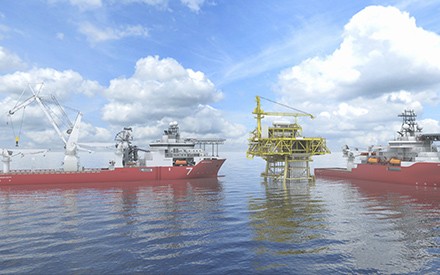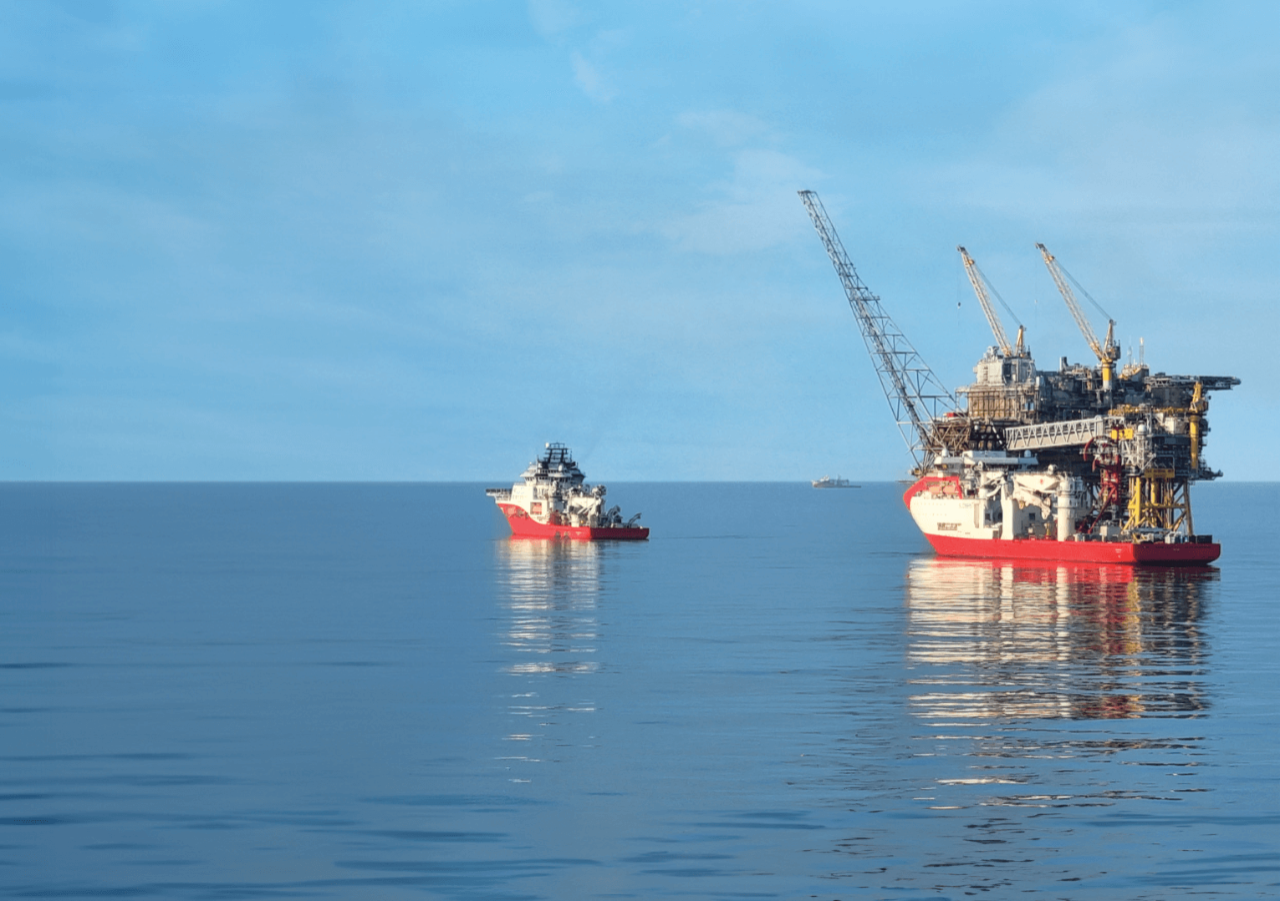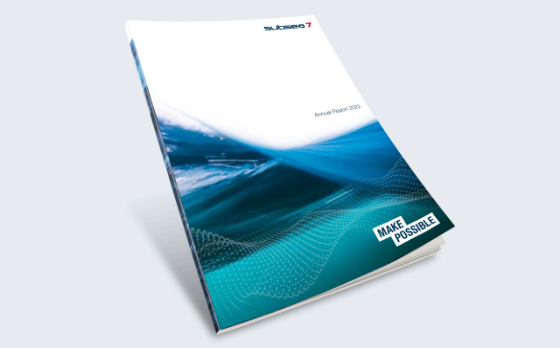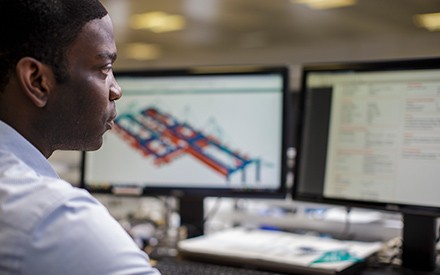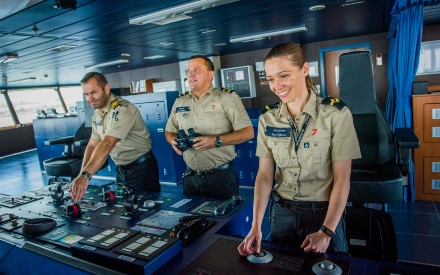Subsea7 / Media / Strategy Publications / Articles / Issue 1 - Making a sustainable offshore wind sector possible
Making a sustainable offshore wind sector possible
By Darren Cormell, Vice President Floating Wind and Strategy, Subsea7
The energy transition is changing the energy landscape, driving a change from traditional Oil and Gas to lower carbon solutions and renewables as key sources of power for the world.
It’s estimated that oil and gas supermajors will increase spend on offshore wind projects to around US$8 billion a year by 2025[1]. The sector looks set to be one of the biggest contributors to renewable energy, with major offshore wind companies, utilities and new entrant energy companies, perfectly placed to lead the way as they diversify and grow their businesses.
We collaborate with energy companies globally, applying our considerable experience in delivering subsea oil and gas projects to offshore wind. But it’s not without challenges and risks.
So, what have we learnt from our experience in subsea oil and gas and 15 years in offshore wind? And, how is this helping to support energy companies in the next stage of their evolution?

The offshore wind market today
Governments around the world are setting some bold targets for both fixed and floating wind. That’s very exciting, and it’s also an ambitious undertaking. Here’s why.
In the past few years, the pace of development and growth in offshore wind has increased rapidly. Turbines are five times bigger than they were about a decade ago - which means that the scale and ambition of projects has ramped up significantly too. We are now talking about extremely large, extremely complex, global projects with multi-billion-dollar budgets.
One consequence of this rapid scaling up of ambition and growth is that we’re seeing a stretched supply chain. The continued growth in the size of offshore turbines has helped project economics, but at the same time has not yet allowed the industry to really drive standardisation and continuous improvement. Furthermore, there’s only so much supply-side capacity available plus there’s also the need to maintain lower carbon oil and gas projects while we transition to renewables. While many of the skills between traditional oil and gas and renewables are transferable, it’s critical that we continue to build up the experience in offshore wind so our supply chain can evolve and grow going forward. Experience matters because as people build experience and knowledge they understand more about what delivering good projects, efficiently with the right economics, looks like.
A second consequence of rapid growth is that managing cost is a challenge. Projects that move quickly, which grow and expand in an emerging market and which mean our industry has to deliver things for the first time at scale all make economic viability a real challenge.
Personally, I think the industry has done an amazing job of scaling up and delivering on this growth to date, but going forward the industry needs better support because we need a sustainable sector for everyone involved. We need clients, developers and the supply chain to all make an economic return. Government policy plays a key role in this; what level of support and what incentive do they provide for the industry to deliver clean energy? How can the industry and the government work together to make sure that the whole offshore wind ecosystem continues to mature?


Early engagement
In a relatively new but fast-moving market, the sooner clients and their partners get around the table the better.

Building in time to really understand the drivers of a project allows people to rethink how things are done. This in turn drives innovation. At Subsea7 our history of early engagement stands us in good stead.
Let's take floating wind as an example.
We've been in offshore wind for 15 years through Seaway7, part of the Subsea7 Group. Last year, outside of China, Seaway7 supported the delivery of around 30% of the world's additional offshore wind capacity. Which is an incredible level of activity and experience. So when you bring all of that together that's a really exciting combination of capabilities to address floating wind.
Layered on top of that, we are affiliated with some fantastic companies through our autonomous subsidiaries, including Xodus who support clients in the very early stages of project origination, lease acquisition and consenting, and 4Subsea, who have been working with clients like Equinor for over a decade to work out the selection of concept technology.
That mix of experience gives us a really fantastic set of insights into the opportunities of floating wind and it's very exciting, but it's also complicated. There’s a lot of different parts of the design within a floating wind project that have to come together. Dynamic motion combined with floating systems results in a very complex design iteration and then there's always a set of trade-offs that you need to make to the system. On top of those design challenges you’ve then got to consider the particularities of wherever that wind farm is in the world; local conditions, local logistics, and local supply chain.
It's a very complex picture, both technically and commercially, to unlock what the right answer is. Having a delivery partner on board that understands those challenges has enormous value in any context. But when you’re talking about things that have never been done before, it is crucial. So, if a client can bring a delivery partner into that mix, that has a wide range of experience and perspectives, and is also able to join the dots, then I think that's a great ingredient to contribute to success. Because ultimately the right partner will find the risks, find the opportunities, look for the optimal economics and also come with a set of practical delivery plans that can be turned into reality.
Therefore, early engagement with capable and experienced delivery partners like ourselves is a really essential part of unlocking the puzzle. Exciting and full of challenges but you need the right people at the table.

Collaboration and partnerships
I’m the first to acknowledge that Subsea7, or any other company for that matter, doesn’t have all the answers to offshore wind. Particularly in floating wind. But what we do have at Subsea7 is experience of successfully working in this environment.
With more than 15 years’ experience in offshore wind projects, we’ve contributed to the production of 10.5 gigawatts of offshore wind power through the installation of foundations and electric cables in Europe, Asia and the USA.
But that’s not been done on our own.
We deliver world class wind projects in some of the world’s most challenging environments and it’s impossible to do that without strong partnerships and collaboration, both with our supply chain and our clients. Every new project is viewed as an opportunity to learn more, to improve and to add more value to our clients’ projects.
Of course competition is crucial as well, particularly for clients who benefit from all the innovation that a competitive market brings. But there's also times when it's right for competitors to come together to form delivery partnerships, and we've a long history of being part of many successful consortiums and joint ventures.
Right now we're working together with Technip Energies in Korea on the first commercial scale FEED scope for the Grey Whale floating offshore wind project. It’s the right thing to do because we are very complementary in terms of our skill sets and our scopes. We're also learning together because as I mentioned earlier these projects have never been done before.
Another area we’re working very collaboratively on is new offshore wind technology. We recognise that some of the capabilities that we need, as this industry scales up, don't exist today. So, we have to prepare for the future by helping technology companies better understand the challenges these projects present so they can develop a mature technology solution.
For example, we invested in a company called Nautilus, which is developing a floating wind concept technology. And that's been a very important step for us because it means we are really driving an in-depth understanding from the inside. That said, we remain technology agnostic because we know there is no one-size fits all approach in offshore wind concept technology. We are developing technologies right across the supply chain, helping them understand the delivery challenges presented by offshore wind and this approach can only bring benefits to everyone.
Take subsea cable systems as another example because again that's a technology that is developing fast. We've just signed a collaboration agreement with Siemens Energy to work on a high voltage subsea connector together. So two industry leaders recognising the value of developing what we feel will be a very innovative and beneficial piece of technology into the offshore wind sector, in particular for floating wind.
Going back to my earlier example of Seagreen, our collaboration with SSE began on the earlier Beatrice project in 2010. When we look forward to how we built on that collaborative approach we were able to deliver Seagreen for around half the cost per MW for the foundations and at the same time delivering the industry’s deepest jacket foundation, achieving success together both technically and commercially.

Creative problem-solving
The offshore energy industry has long held a reputation for figuring out answers to some of the world’s toughest engineering questions. The environments we operate in are some of the most hostile and challenging anywhere on earth.
Looking back, Subsea7 emerged out of the commercial diving industry and our history is one of solving challenge upon challenge to propel the offshore energy industry forward.
We were involved in the technology to allow people to dive safely, we pioneered autonomous, remotely operated underwater vehicles and we were part of the story of the development of the deep-water fields off West Africa.
I’m reassured by that history as we look to the future. I know there are some massive challenges ahead, but I also know that when you put the right people together in the right conditions, good things happen.
However, creative problem-solving doesn’t happen by chance. You have to work at creating a problem-solving environment. You need to make the right choices about how you foster that commercially, contractually, and in terms of the relationships you build. Give people exciting challenges and create an environment where they can solve problems, make mistakes, learn, adapt and ultimately work in an open way with different sources of knowledge and expertise to draw on.


Innovative thinking
Just because something has always been done a particular way doesn’t mean that there isn’t room for change and improvement.
At Subsea7 we draw on our past 15 years’ experience in offshore wind and over 40 years’ working in subsea field development to inform our future solutions - but we’re never tied to them. In an ever-evolving, fast-paced market the ability to embrace innovative change is critical.
For example, it used to be the industry norm that the monopiles used in constructing fixed wind platforms were installed by a static piling vessel that had to be moored or jacked up first. This allowed the vessel to be fixed in position while hydraulic impact piling was used to hammer the pile into the seabed.
After years of data collection, modelling and analysis, we achieved a world-first dynamic positioning monopile installation. Rather than mooring the piling ship, our system takes advantage of the ship’s computer aided navigation system, using the ship’s thrusters and pulsion to keep the vessel in place while the pile is driven into the seabed, an operation which reduces each monopile installation cycle by 30% and saves significant time on the entire project schedule.


Development of new business models and regulatory frameworks
There are many policy and regulatory areas which will play a significant role in future offshore wind deployment.
At Subsea7 we have very little influence over these but if the offshore wind industry is to meet the world’s ambitious zero-carbon energy targets then change needs to happen, particularly in financing, infrastructure and permitting.
What we do have control over is our business models. Fixed-price contracting doesn’t strike me as an equitable way to approach a fast-moving, ever-changing market because so many variables mean that it’s not a fair balance of risk and reward. Changing to a delivery partner approach makes good sense to build a sustainable industry. Work together, understand the risk, be commercial in your mindset and be driven by the best project outcome. I think we all need to consider new commercial models because ultimately they will create an aligned commercial success for all participants. Which means we can all be part of a successful future for the offshore wind industry.
To bring this article to an end I’m happy to say that offshore wind is one of the most exciting markets I’ve been involved in with Floating Wind in particular, a market full of challenges and opportunities. Fast-moving, ever-evolving and demanding, it challenges us all to rethink how we do things and invest in new ways of working that deliver good outcomes and solutions.
At Subsea 7, supported by a clear strategy for emerging energies, we have an incredible set of capabilities all the way from project origination through to delivery of these very large-scale projects and beyond, into capabilities and technologies that make the operational phase of projects more efficient and effective.




